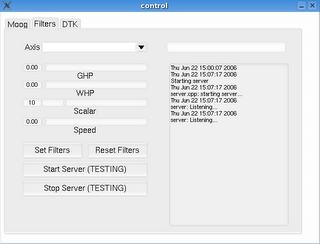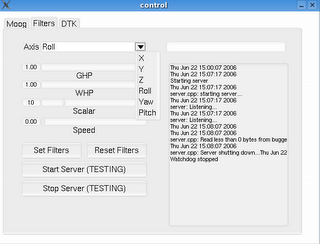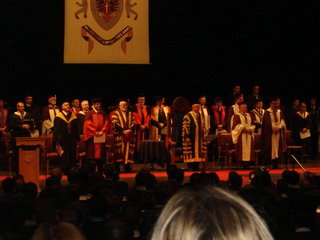First I had to modify the Vdrift source to record accelerations in all 6 dimensions. This was easy enough to do. This had to be done in the same format defined in the xml file written for FlightGear. After re-compiling the source, and running the game, the car was bouncing like a bunny all over my screen! After a quick check on the Vdrift forum I found out it that it requires an older compiler than what Fedora 4 or 5 come with. I got hold on some Slackware 10.2 CDs after MvM suggested that I use that instead since most of the packages we need have a slackware version which should avoid problems. Anyway after doing that, the vdrift source compiled fine and I got all the required drivers (joystick & Nvidia) and software/libraries (Fltk, DTK) installed properly.
All that was left is to get the UDP listener I wrote for FlightGear listening to the same port vdrift is writing to. I added two new command lines to vdrift to control the frequency of writing to the UDP and the host it should write to.
I produced this screenshot while running everything together on localhost.
 The scope at the bottom comes built in with the DTK-Diverse program. The blue lin in the middle is supposed to be the force of gravity (in the Z-axis) but for some reason it comes out very close to 0 from vdrift, so it never moves. This can't be right as it should move at least when I am driving over mountains or down a hill. Anyway I will figure this out later, the physics engine for Vdrift is buggy anyway and nowhere as good as the one that comes with FlightGear.
The scope at the bottom comes built in with the DTK-Diverse program. The blue lin in the middle is supposed to be the force of gravity (in the Z-axis) but for some reason it comes out very close to 0 from vdrift, so it never moves. This can't be right as it should move at least when I am driving over mountains or down a hill. Anyway I will figure this out later, the physics engine for Vdrift is buggy anyway and nowhere as good as the one that comes with FlightGear.





